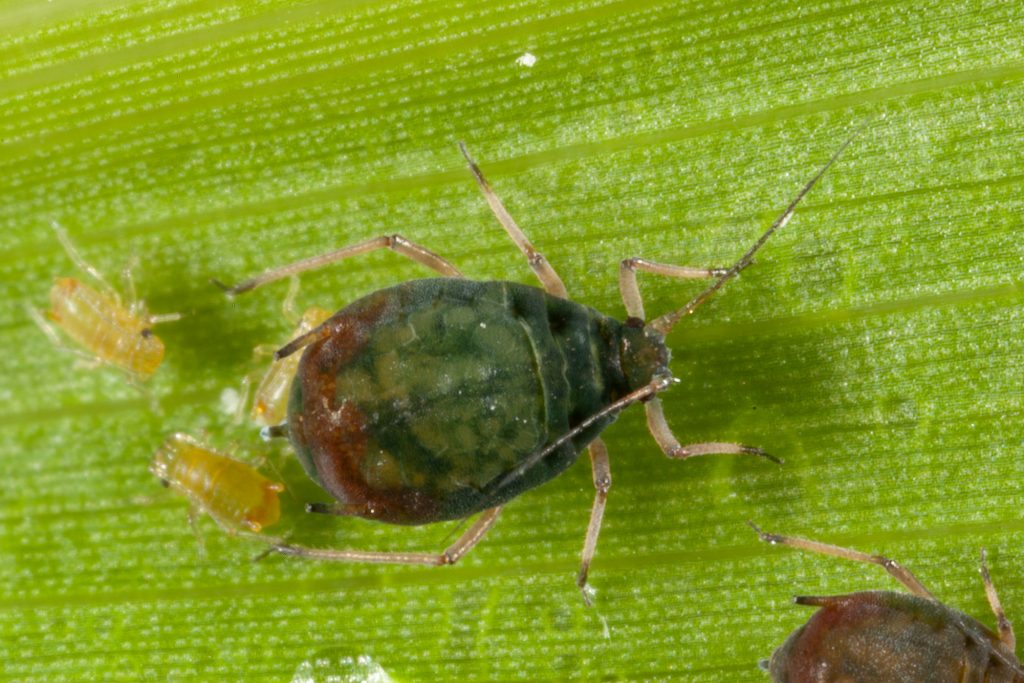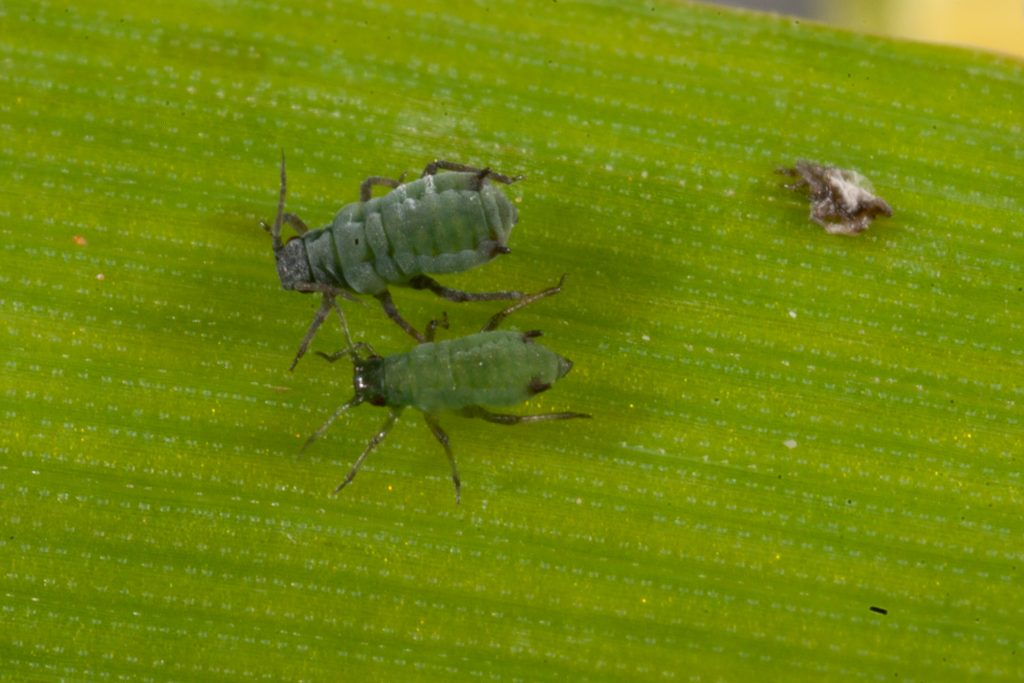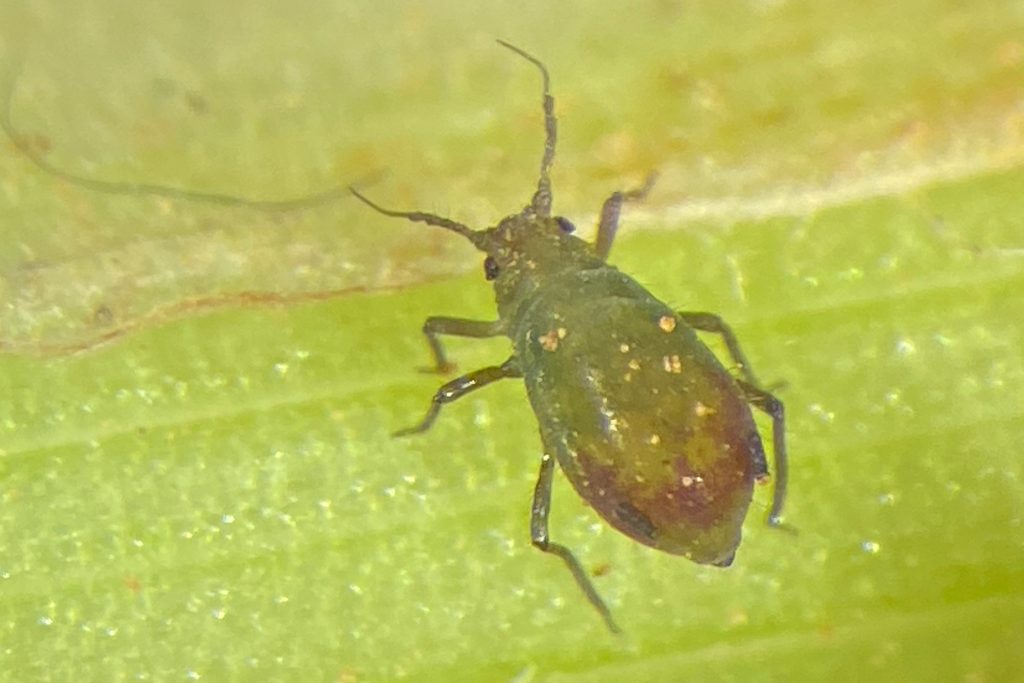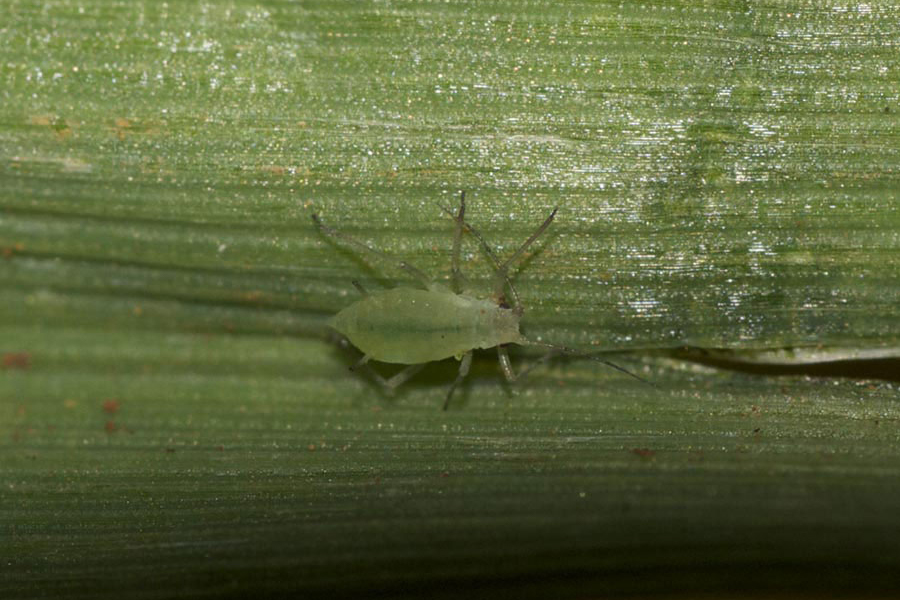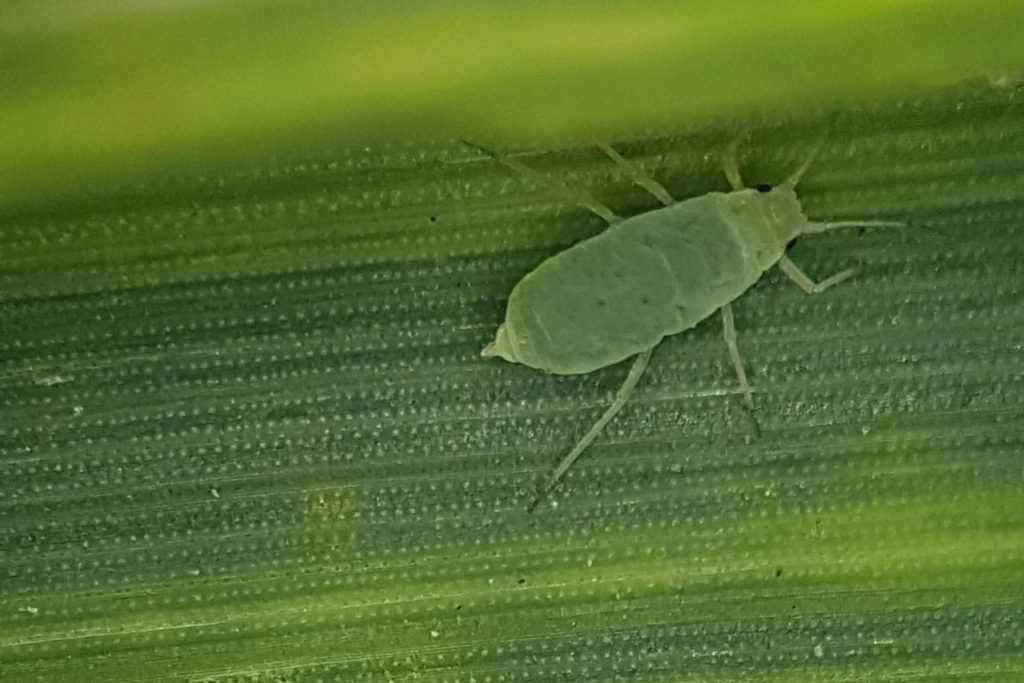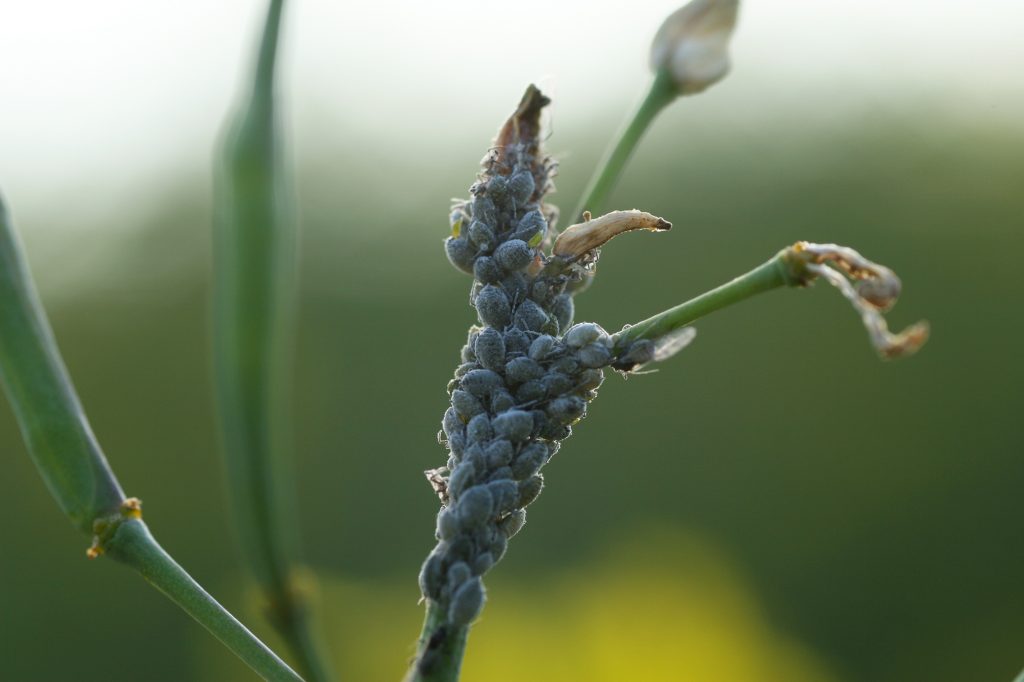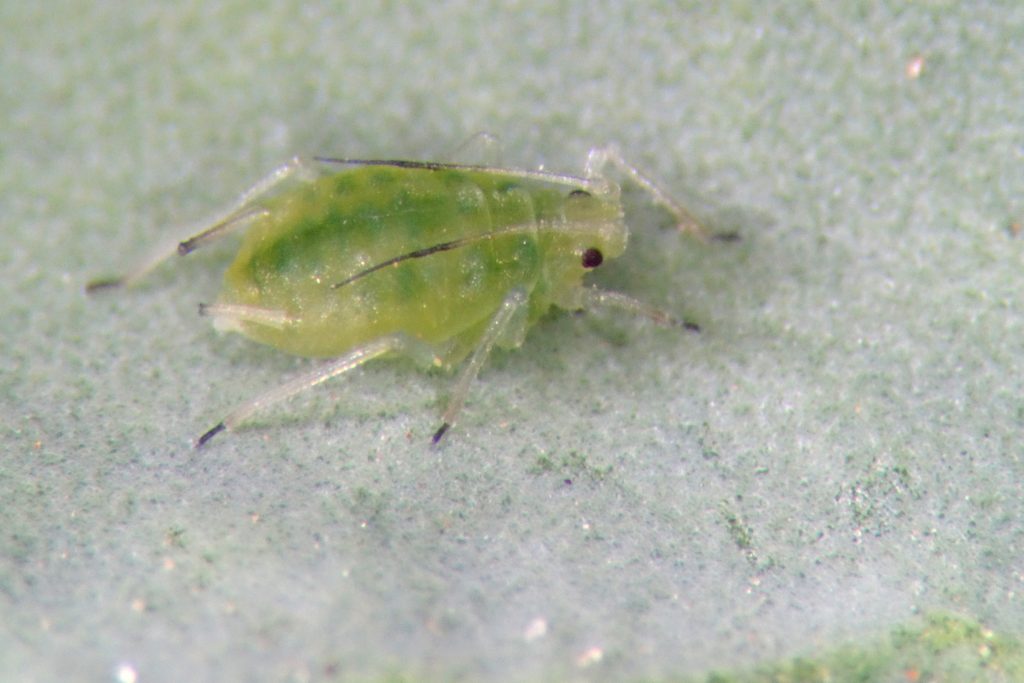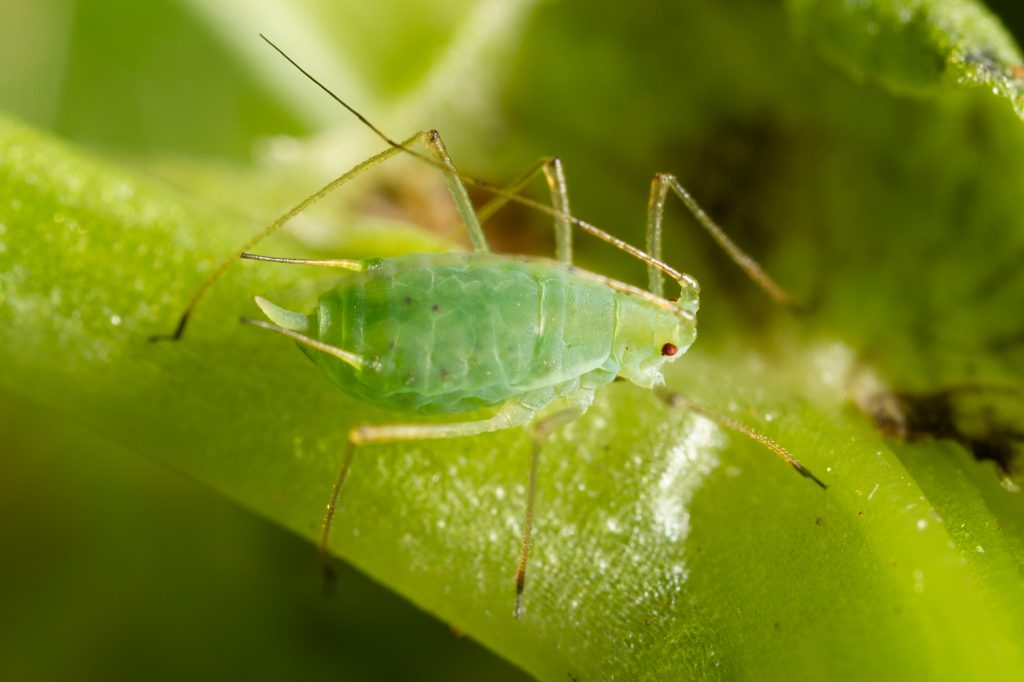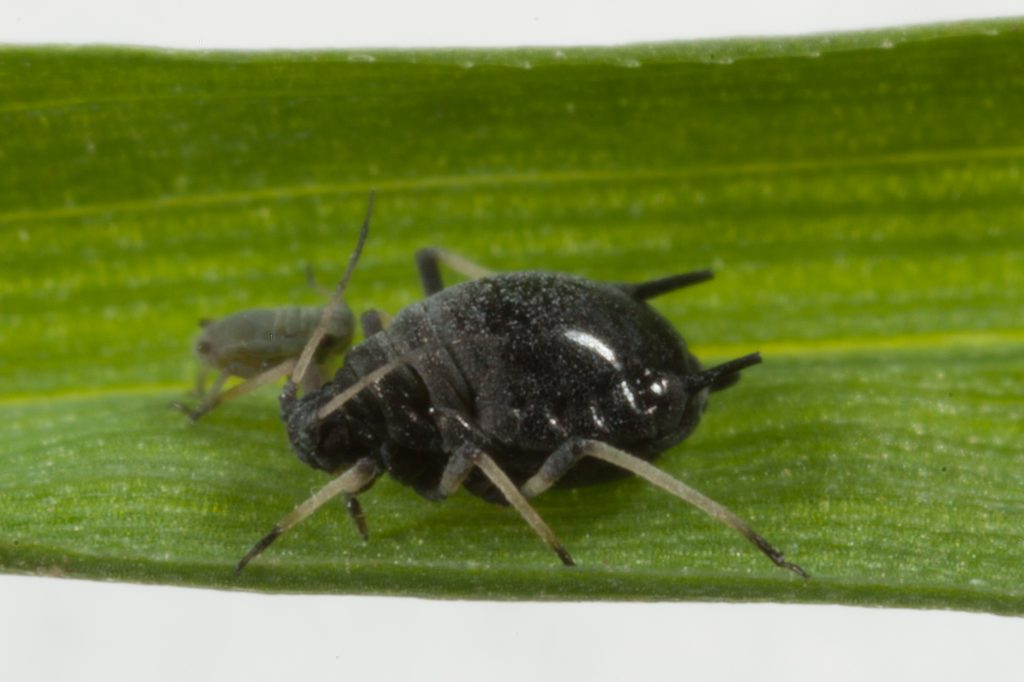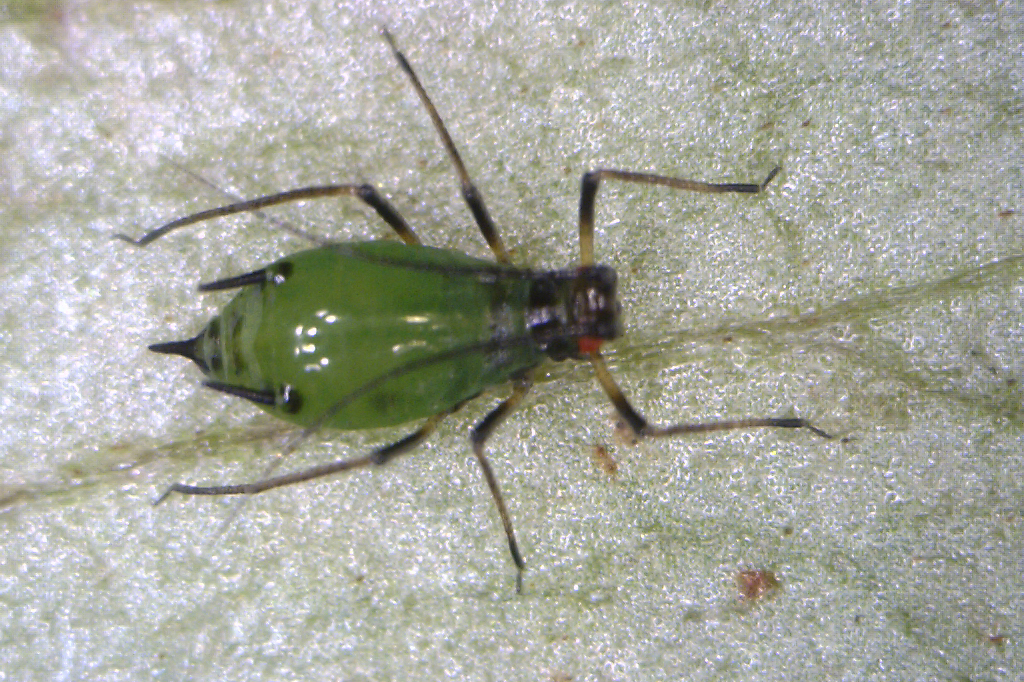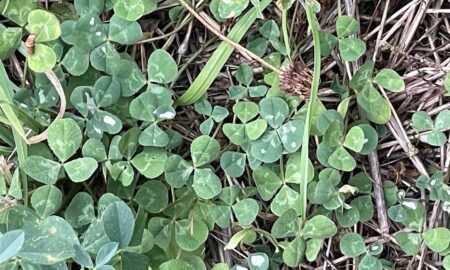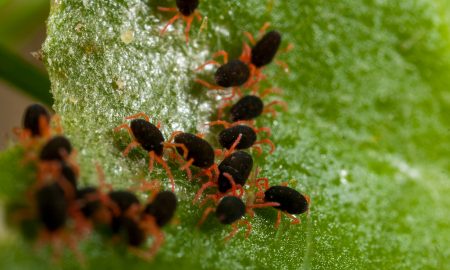Australia has just had a very warm August.
And with spring predicted to be warmer than average also, this could spell increased and earlier aphid activity.
Here we look at aphids of grain crops and their management this spring.
Aphids as crop pests during spring
A key concern of aphid pests in grain crops is their ability to transmit viruses. Aphid management for virus prevention is particularly important during early stages of crop growth, when crops are most vulnerable to economic losses due to infection.
However, as we enter spring and aphid activity increases, the concern of having aphids in flowering crops largely shifts to their ability to cause damage from direct feeding, as mature crops are less likely to be impacted by viruses.
Aphids are sucking pests. They feed with needle-like mouth parts, with which they pierce plants and suck out the moisture and nutrients.
The feeding damage from heavy aphid infestations can cause wilting, plant distortion, leaf curling, bud and flower drop, and reduced pod set. However, feeding from aphids might not always be obvious. Often, it takes careful comparison with unaffected plants to assess their impact.
Warm weather impacts on aphids
With a mild August behind us and the potential for a warmer than average spring ahead, aphid numbers may be higher than usual over the coming months.
Warm temperatures favour aphid development and reproduction, with optimal temperatures between 20-25°C depending on species. During optimal periods, aphid populations can multiply rapidly, cycling through several generations in a short period.
Plus, a milder August could have prompted an earlier start to spring aphid migrations.

Aphid identification troubleshooting
There are several species of aphids that may be found in spring, with some becoming more significant at this later stage of crop development.
As it is easiest to identify aphid species by wingless adults, the following descriptions mostly apply to this development stage.
Cereals
The oat aphid (Rhopalosiphum padi) is usually the most abundant cereal aphid during spring, and recently, patches of high numbers have been reported in the New South Wales Riverina.
This aphid is olive-green to greenish black and are usually identifiable by a red patch across their siphunculi, the ‘exhaust pipe’ like structures at the end of their body.
Two less common and minor pest species which could be mistaken for the oat aphid in cereals, are the corn aphid (Rhopalosiphim maidis) and the rice root aphid (Rhopalosiphum rufiabdominale).
The corn aphid is light green to dark green in colour, but lacks the red patch of the oat aphid. Instead, it has a dark patch at the base of each siphunculus.
The rice root aphid looks particularly like oat aphid, as both have a red patch across their siphunculi. However, the rice root aphid often has a more golden hue compared to the greener toned oat aphid. The rice root aphid also has shorter antennae that often look like bull horns.
Whereas oat and corn aphid colonise above ground parts of plants, the rice root aphid primarily targets roots, although populations can occasionally start to creep towards the plant base and crown.
Russian wheat aphid (Diuraphis noxia) and the rose-grain aphid (Metopolophium dirhodum) may also be found in cereal crops.
Rose-grain aphid is not commonly reported but is the aphid species most likely to be confused with Russian wheat aphid.
Russian wheat aphid and rose-grain aphid are both pale green and spindle-shaped, but here’s how you tell them apart: the rose-grain aphid has a dark green line down the middle of its back and long siphunculi and antennae. Whereas the Russian wheat aphid is uniform in colour, lacks visible siphunculi and has short antennae. Feeding by rose-grain aphid will not cause the classic, Russian wheat aphid damage symptoms of whitish, yellowish to pink-purple chlorotic streaks.
Canola
Cabbage aphid (Brevicoryne brassicae), green peach aphid (Myzus persicae) and to a lesser extent, turnip aphid (Lipaphis pseudobrassicae) are the three aphid species most reported on canola.
The cabbage aphid forms colonies with a blue-grey appearance and are normally covered in a thick, whitish powder. Individual wingless adults sometimes have black markings visible on their body.
The turnip aphid is olive to greyish green in colour, and colonies are typically covered with a fine wax, though this is not as thick as on the cabbage aphid.
The green peach aphid varies in colour from shiny green to pink and does not have a powdery or wax coating.
Cabbage aphid and turnip aphid are pests during spring as they form dense colonies around flowers, pods and stems.
Whilst green peach aphid tends to colonise the underside of older leaves, we have seen green peach aphid move up onto stems and pods, especially with senescence of lower leaves and in dry years. However, any impact on yield and oil quality remains unclear. They don’t appear to colonise as densely as cabbage aphid or a turnip aphid do.
Pulses
Aphids which occur in pulses in Victoria and southern New South Wales are the blue green aphid (Acyrthosiphon kondoi), pea aphid (Acyrthosiphon pisum), cowpea aphid (Aphis craccivora), faba bean aphid (Megoura crassicauda), and occasionally green peach aphid.
Among these, bluegreen aphid and pea aphid are the two which are the most difficult to tell apart. Blue green aphid is matte bluish green in colour, whereas the pea aphid colour varies from green, yellow to pink. To help tell these two species apart in the field, size is a useful indicator. The wingless adult bluegreen aphid grows to 2.9 mm, and is smaller than the wingless pea aphid adult, which can reach 4.4 mm in length.
Cowpea aphid and the faba bean aphid are two species with distinctive appearances, and are unlikely to be confused with other pulse aphids.
The cowpea aphid has a shiny black appearance (although immature nymphs are a dull grey), while the faba bean aphid has a dark green body, and black head, cauda (tail), siphunculi, antennae, and legs.
Knowing when to act
Here we have collated some thresholds for direct feeding damage to help guide spray decisions.
Most of these thresholds are based on ‘rules of thumb’ – they have been estimated, based on the insights of experienced consultants and researchers. They do not consider dynamic variables such as grain prices, insecticide cost or abiotic factors, and are best used as general guidelines.
When using thresholds, assess at least five points of the paddocks as aphid distribution is often patchy.
Crops that are not moisture stressed have a greater ability to compensate for aphid damage and will generally be able to tolerate far higher infestations than moisture stressed plants before a yield loss occurs.
Keep in mind that aphids are known to colonise and ‘bully’ plants that are already stressed, so their presence could be a secondary issue, not the primary cause of damage.
| Species | Threshold | Notes |
| Oat aphid Corn aphid | More than 15 aphids per tiller on 50% of tillers if the expected yield will exceed 3 t/ha (Hertel et al. 2022). | Aphids have been observed to decline as the crop comes into head (Miles 2013). |
| Russian wheat aphid | See dynamic economic threshold calculator available. | The threshold calculator considers dynamic factors including cost of control, cereal market price and aphid numbers. It can be used between GS30 (start of stem elongation) and GS50 (start of head emergence), although monitoring is recommended at GS30 as early infestations of this aphid can prove the most impactful on potential yield. |
| Rice root aphid | Not established. | Use of insecticides against rice root aphid in established plants is discouraged given that it is a minor pest and that the aphids are mostly subterranean and are likely not exposed enough to enable good contact. |
| Rose-grain aphid | Not established. | |
| Cabbage aphid Turnip aphid | More than 20% of canola plants infested with aphids (DPIRD 2022). | |
| Green peach aphid | Not established. | In advanced canola, green peach aphid tends to colonise the underside of leaves and is not typically expected to have an impact on yield. This species has evolved insecticide resistance. |
| Bluegreen aphid | Lupins (WA): 30% of inflorescences are infested with 30 or more aphids (DPIRD 2021). Faba beans (VIC): 10% of plants infested (source unknown) | This species has evolved insecticide resistance. |
| Pea aphid | Lupins (WA): 30% of inflorescences are infested with 30 or more aphids (DPIRD 2021). Faba beans (VIC): 10% of plants infested (source unknown) | |
| Cowpea aphid | Lupins (WA): 30% of inflorescences are infested with 30 or more aphids (DPIRD 2021). | |
| Faba bean aphid | Not established. | Has only been in Australia since 2016. See the GRDC Faba bean aphid fact sheet to learn what is known about this species in Australia. |
Nurture your beneficials
Highly mobile beneficial insects (‘natural enemies’) increase in numbers around aphid colonies during spring. You may even spot hoverfly and ladybird beetle adults flying amid aphid colonies, looking for egg-laying spots. So, while aphids may build-up in high numbers, beneficials are usually not far behind.
There is a delay between aphid population build up and the beneficials making an impact. Monitoring both aphid and beneficial populations over time is key to determining the impact of beneficials.
With respect to parasitoid wasp activity, keep in mind that when aphids start to look like “aphid mummies” only when wasp development is almost complete. Since the extent of parasitism might not be obvious just by looking at the aphids, the level of parasitism in a crop may be higher than what can be seen by eye. What’s more, beneficials can only do their best work if left uninterrupted. If broad spectrum chemicals are sprayed at this time of year, beneficial populations will take a hit. These sprays will be particularly impactful for any resident natural enemies, which will take time to recover. We recommend using more selective chemistries for aphid control.
But what about virus?
This winter, we saw an outbreak of green peach aphid and concerns of turnip yellows virus (TuYV) in canola crops across areas of southern New South Wales. If green peach aphid populations do continue to be found, the risk of the TuYV impacting yield of autumn-sown crops* should now be low. The best available evidence suggests that infection acquired after flowering is unlikely to lead to yield loss in crops as result.
And while spring may bring an increased numbers of cabbage aphid and turnip aphid, turnip aphid has not been shown to transmit TuYV, and cabbage aphid has only been shown so far to transmit Eurasian isolates at very poor efficiency (Personal communication, Congdon 2024).
Reports indicate increasing numbers of oat aphid during August, which is a vector of barley yellow dwarf virus (BYDV). If you’re considering spraying at this stage, it should be guided by the risk of direct feeding damage, not BYDV prevention. The effect of late BYDV infection alone is generally not enough to justify spraying in spring (GRDC 2013).
*Spring sown canola crops in 2024 may still be at risk of virus.
Acknowledgements
Thanks for the following advisers and growers for providing field reports: Terry Edis (Elders), Craig Farlow (Elders), Aaron Hutchison, Pat Connell, Bec Dean (Rural Management Strategies).
Thanks to Lilia Jenkins, Cesar Australia for edits.
Cover image: Photo by Pat Connell


